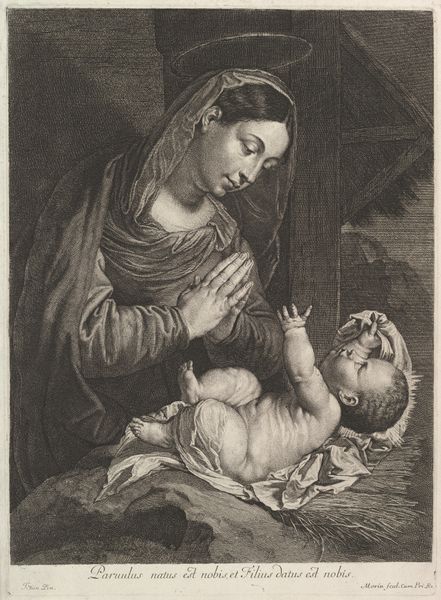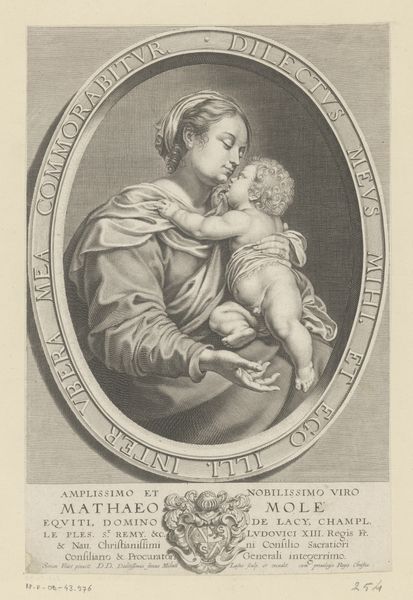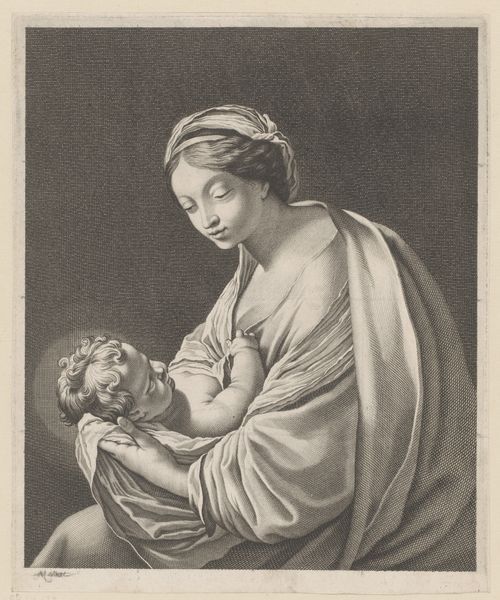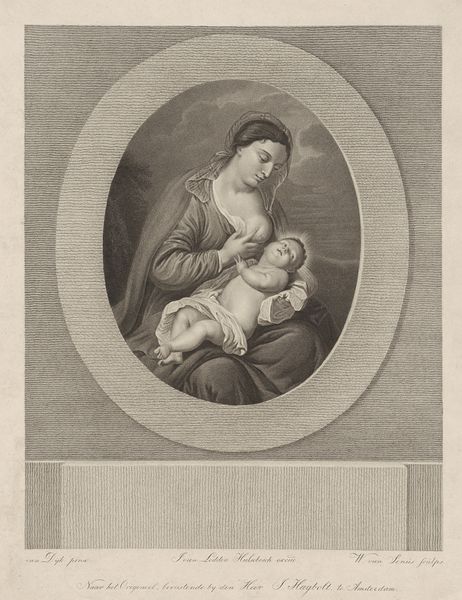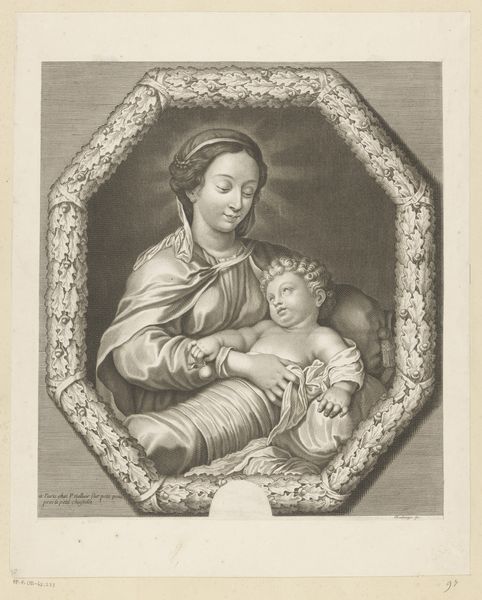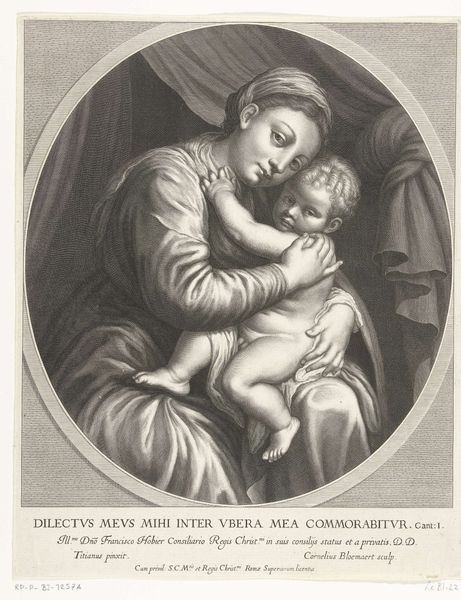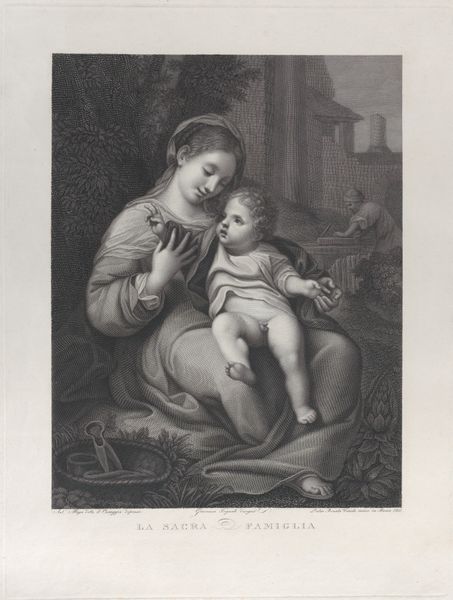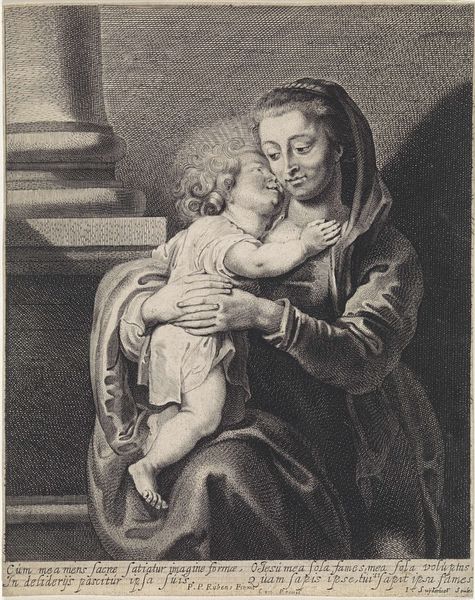
The Virgin with the infant Christ seated on a cushion and the young Saint John the Baptist kissing his foot, an octagonal composition, after Reni 1745 - 1775
0:00
0:00
drawing, print, engraving
#
portrait
#
drawing
# print
#
figuration
#
history-painting
#
italian-renaissance
#
engraving
#
virgin-mary
Dimensions: Sheet (Trimmed): 10 1/8 × 7 1/16 in. (25.7 × 17.9 cm)
Copyright: Public Domain
Editor: This is "The Virgin with the infant Christ seated on a cushion and the young Saint John the Baptist kissing his foot, after Reni," an engraving by Andrea Rossi, dating from around 1745 to 1775. The tenderness in this image is striking – John’s innocent devotion, Mary's serene expression... What readings do you find most compelling in a piece like this? Curator: It's interesting to see this familiar scene refracted through the lens of gender and power dynamics. Think about the pervasive idealization of motherhood within religious art, often positioning women as either virgin or mother, thus limiting female identity. What does it mean to portray the Virgin Mary, repeatedly, as the epitome of selfless nurture? How might this impact the lived experiences of women? Editor: I see your point. The engraving definitely perpetuates the established, somewhat restrictive narrative surrounding female roles... but how does the inclusion of Saint John challenge, or reinforce, the reading? Curator: That’s key. Saint John's act of kissing Christ’s foot can be understood as an acknowledgement of divine authority, yes, but also prompts us to question who dictates those power structures. Early Renaissance depictions of religious scenes are loaded with the complexities of class and power in 18th century society. Do you think it’s possible to separate our contemporary understanding of these power structures from those present in earlier centuries? Editor: I'm not sure. It feels impossible *not* to view historical works through a contemporary lens. We’re inherently influenced by current social and political climates, right? Curator: Precisely. And in doing so, we can challenge those systems of representation and actively reshape cultural dialogues around them. The engraving, after Reni, provides us insight into not only the period during which it was originally conceived but also continues to resonate and raise pressing concerns today. Editor: I agree! Reflecting on its historical context really underscores the artwork's complicated place in the art historical canon and also in our understanding of gender and social status today.
Comments
No comments
Be the first to comment and join the conversation on the ultimate creative platform.

